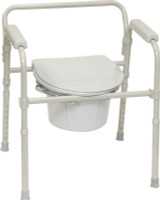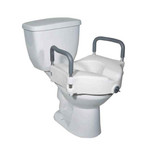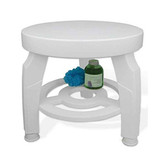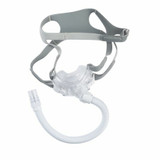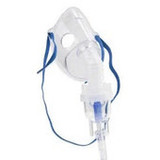
The Caregiver Guide - Preparing for Aging in Place
Aging in place is a relatively modern term, even though the concept has been around for a long time. In days gone by, almshouses were better known. In the US, almshouses were introduced by the Europeans in the colonial era. When family or neighbors couldn’t take care of someone, they were put in a care facility. These institutions were usually operated by the village or a government organization.
In recent times, however, there has been a shift towards aging in place. The idea behind aging in place is that seniors should have the choice to age gracefully at home rather than going into assisted living facilities or nursing homes. With proper support services and modifications, many older adults can continue living safely and comfortably in their own homes.
There are several compelling reasons why this trend has developed and why we can expect it to continue or even accelerate for the foreseeable future. Let’s briefly discuss the main drivers:
- Rising Costs. Medical and professional care costs have spiraled, and people increasingly opt for in-home care.
- Loss of Independence. Most older adults prefer to maintain their independence and dignity for as long as they can. For some, checking into a care facility may seem like an acceptance of defeat.
- Assistive Technology. So many devices and applications are available nowadays that automate tasks or help people with impaired abilities to perform activities of daily living.
- Familiarity. Aging in place means staying in your comfort zone. You know the “lay of the land,” and you’re surrounded by familiar furniture and memorabilia. Moving house is considered the third most traumatic event after losing a loved one or divorce.
Aging in place doesn’t, however, mean that nothing changes. Several considerations may become necessary, such as ensuring access to healthcare services, modifying the home for safety and accessibility, facilitating social engagement and transportation options, and assisting with daily activities.
Home Safety and Accessibility
Aging brings a variety of frailties that make it more difficult for people to perform basic tasks or to move around the house without some difficulty. Making the home safer and more accessible is, therefore, something that becomes essential to enable aging in place.
Most of these modifications are simple and inexpensive, such as ensuring adequate lighting throughout the house, installing grab bars in bathrooms and stairways, and removing tripping hazards like loose rugs or cluttered pathways. For people with impaired mobility, it may be more complex, though. You may need to widen hallways and doorways to accommodate mobility devices or install ramps or lifts to allow easy access to different levels of the house.
Medical Needs and Medication Management
An almost inevitable consequence of aging is the increasing use of medication. Many older people use multiple drugs with different dosage schedules. For some, managing this can become very challenging with potentially disastrous consequences. Advancements in technology and healthcare in recent times have, however, made medication management a lot easier.
If you’re preparing for aging in place, setting up a comprehensive plan to stay organized and ensure that medications are taken correctly and on time is important. Various tools and systems are available to help with this. The simplest is using reminders like alarms on smartphones or dedicated pill reminder devices that provide audible alerts when it's time to take specific medications.
Going a step further, pill organizers or automated dispensing systems can ensure that each dose is available when needed. These systems typically divide medications into individual compartments for each day or time slot, reducing the risk of missed doses or confusion.
Lastly, try to arrange with your local pharmacy to fill prescriptions automatically when they become due and deliver the medications to your doorstep. Many pharmacies will gladly do this without any additional charge. This removes one task from an already demanding schedule and reduces your stress as a caregiver.
Maintaining Physical and Mental Health
With advancing age, people become much more vulnerable to a decline in physical and mental health. This is largely due to a slowdown in mobility and exercise coupled with degrees of isolation and loneliness. It can very quickly turn into depression and withdrawal. Engaging in suitable activities at home can help aging adults maintain their physical health and cognitive abilities, while social engagement helps to support mental well-being.
Plan an exercise routine that helps to maintain strength, flexibility, and balance. Activities should be tailored to the senior’s abilities. Low-impact exercises like walking, yoga, or chair exercises are ideal. Mental stimulation exercises such as puzzles, brain games, reading books or engaging in hobbies like painting or playing musical instruments can also contribute to their overall well-being.
In addition to individual activities, social engagement is equally important for aging adults. It provides a sense of belonging and connection with others. Seniors can participate in community programs or join clubs that align with their interests. Volunteering opportunities allow them to give back while interacting with others who share similar passions.
Technology has also opened up new avenues for social engagement among seniors. Video calls with family and friends, joining online communities or participating in virtual classes provide opportunities for interaction even from the comfort of home.
Caregiver Self-care Tips and Resources
The role of a caregiver is a demanding one that often involves juggling multiple responsibilities and challenges. Having access to a support network helps alleviate stress, provides guidance, and offers emotional support to caregivers. Support groups, online forums, and community organizations are examples of resources that can be part of this caregiver support network. The National Alliance for Caregiving and the Family Caregiver Alliance are good places to look start.
Very few caregivers can take the entire burden of responsibilities in their stride without showing some cracks. This is not something you should take on all alone. Enlist the help of family and friends wherever possible. Also consider contacting a respite care agency who can provide a stand-in for a few days so that you can take a break. Caregiver burnout is a real condition. Read this article for tips on how to look after yourself.
Conclusion
The cost of assisted living care facilities and retirement homes has risen beyond the reach of most people. This has created an accelerating trend for people to choose aging in place and to remain in a familiar and, often fully paid, environment. As a caregiver, there is a very good chance, therefore, that you will be caring for a person in their own home.
Facilitating aging in place is not as difficult or daunting as you may think. Modern technology provides a host of devices and apps that can take care of some of your caregiver tasks and responsibilities. Many online resources offer valuable information and insights, connection opportunities with others in the same position and resources for counseling and support when you feel you’re losing the battle.
And never forget that many retailers nowadays are geared to make managing your supplies as stress-free as possible. For example, LL Medico’s Autoship feature allows you to set a regular delivery schedule for all your adult diaper needs, over-the-counter medications, home and bath requirements, and so much more.
In the words of Mark Twain, "Age is an issue of mind over matter. If you don't mind, it doesn't matter." Older people who have the option of aging in place are probably better equipped to deal with aging and would mind getting older a whole lot less. What you do as a caregiver makes it so much easier for aging in place to be a practical option.












































































